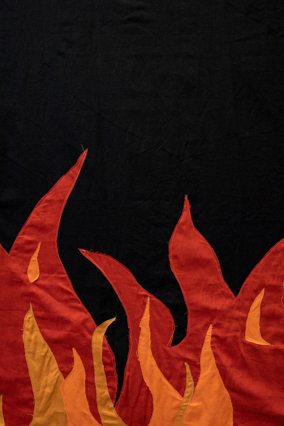THE WORLD,
THE FLESH
AND THE DEVIL
03.14 - 04.08.2020

THE WORLD, THE FLESH AND THE DEVIL
Couvent des Cordeliers, Savenay
13.03.20
Due to the current health context, we are forced to postpone Marianne Vitale’s exhibition The World, the Flesh and the Devil which was to be held at the Cordeliers convent in Savenay from March 14 to April 8, 2020. We will keep you informed of the new dates of the exhibition, depending on the evolution of the situation. The Mosquito Coast Factory team
OPENING
Saturday March 14th, 11am
EXHIBITION
03.14 - 04.08.2020
Tuesday to Sunday, 2pm-6pm
Free Entrance
L'association Mosquito Coast Factory reçoit le soutien de la DRAC Pays de la Loire, du Conseil régional Pays de la Loire, du Département Loire-Atlantique, des communes de Savenay et de Campbon.
The medieval Franciscan edifice of the Convent of the Cordeliers of Savenay, built in 1419, has, since the eighteen century, been converted to a secular, national good, serving as a police station, a prison, a teacher’s college, a military hospital, and a post office, before falling into disrepair over the last forty years. Marianne Vitale’s exhibition The World, the Flesh, and the Devil, recovers the Convent’s spiritual foundation, opening up a space for contemplation and reflection that recalls acts of prayer and devotion seated deep in the building’s history. A soundscape, created in collaboration with American composer and pianist Pete Drungle, turns flesh immaterial, interweaving chants and speech with music which emanates from within a sculptural bunker. Hefty wooden columns lie horizontally, arranged as pews for seating, are surrounded by a series of cloth flags featuring stylized motifs, some figurative—interlocking swords, chain links, flames, a ring of pliable and dancing legs—and some more abstract, standing as banners for no nations.
The World, the Flesh, and the Devil is the third and final chapter in a three-year project initiated by Mosquito Coast Factory in 2018. Vitale was invited to reconsider the history and geography of Savenay which, from 1917 to 1919, entered the historical stage, when it became host to the construction and efficient utilization of the largest American military hospital in war-torn France. On the centenary celebration of the end of World War I, Vitale permanently installed the Worthies, a series of nine sculptures near the valée Mabile dam which supplied the hospital, repurposing Pennsylvania railroad switches as totemic symbols of the industrial technologies that enabled the movement and circulation of soldiers, artillery, and supplies during the war. Salvaged wood and window frames from the sole surviving military hospital barracks were redeployed in the project’s second chapter, Amputations/Resurrections, in an installation emphasizing the material history of this period of Savenay’s past, through architectural frames turned archaeological artifacts.
